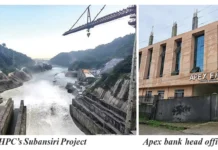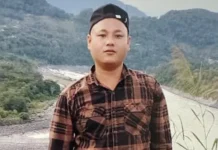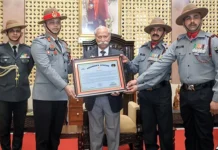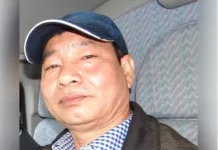Vatican City, 21 Apr: Pope Francis, history’s first Latin American pontiff who charmed the world with his humility and concern for the poor but alienated conservatives over climate change and critiques of capitalism, died on Monday. He was 88.
Bells tolled in church towers across Rome after the announcement, which was read out by Cardinal Kevin Farrell, the Vatican camerlengo, from the chapel of the Domus Santa Marta, where Francis lived.
“At 7:35 this morning, the Bishop of Rome, Francis, returned to the home of the Father. His entire life was dedicated to the service of the Lord and of his Church,” Farrell said.
Francis entered Gemelli hospital on Feb. 14, 2025, for a respiratory crisis that developed into double pneumonia and, at 38 days, became the longest hospitalization of his papacy. Part of his right lung was removed in the late 1950s after a bout of pneumonia, and he suffered from chronic lung disease.
He emerged on Easter Sunday – his last public appearance, a day before his death – to bless thousands of people in St. Peter’s Square, drawing wild cheers and applause.
The death now sets off a weekslong process of allowing the faithful to pay their final respects, first for Vatican officials in the Santa Marta chapel and then in St. Peter’s for the general public, followed by a funeral and a conclave to elect a new pope.
From his election on March 13, 2013, the Argentine-born Jorge Mario Bergoglio signaled a different papacy, embracing refugees and the downtrodden, especially following the troubled tenure of Pope Benedict XVI, who surprisingly resigned.
But conservatives grew increasingly upset with Francis’ progressive bent, outreach to LGBTQ+ Catholics and crackdown on traditionalists. He badly botched a notorious case of clergy sexual abuse in 2018.
The crowd-loving, globe-trotting pope also navigated the church through the coronavirus pandemic from a locked-down Vatican City, declaring it “has shown us that we cannot live without one another, or worse still, pitted against one another.”
Elected on a mandate for reform
Francis was elected on a mandate to reform the Vatican bureaucracy and its finances, but he went further, shaking up the church itself without changing its core doctrine.
Asked about a purportedly gay priest, he famously responded, “Who am I to judge?” – a welcoming message to the LGBTQ+ community and those who felt shunned by the church.
Francis changed church positions on the death penalty, declaring it inadmissible in all circumstances, and modified its stand on nuclear weapons by saying their possession was “immoral.”
In other firsts, he approved an agreement with China on bishop nominations that had vexed the Vatican for decades, and charted new relations with the Muslim world by visiting the Arabian Peninsula and Iraq.
But his real revolutionary change came in emphasizing the church should be a refuge for those on society’s fringes: migrants, the poor, prisoners and outcasts.
Evoking St. Francis of Assisi
Francis lived in the Vatican hotel rather than the Apostolic Palace, wore his old orthotic shoes rather than the traditional red loafers, and used compact cars.
If being the first Latin American and Jesuit pope wasn’t enough, he was the first to name himself after St. Francis of Assisi, the 13th century friar known for personal simplicity, his message of peace, and care for society’s outcasts and nature.
His first trip as pope was to the Italian island of Lampedusa, epicenter of Europe’s migration crisis, and he consistently visited countries where Christians were persecuted.
Missteps on priestly sexual abuse
But over a year passed before Francis met survivors of priestly sexual abuse. Victims’ groups questioned whether he understood the scope of the problem.
His papacy’s greatest crisis came in 2018, when he discredited Chilean victims of abuse and stood by a bishop linked to their abuser, a notorious pedophile. Francis later invited the victims to the Vatican for a personal mea culpa and summoned the leadership of the Chilean church to have them resign.
Another crisis erupted over ex-Cardinal Theodore McCarrick, the retired archbishop of Washington and a counselor to three popes.
Francis had sidelined McCarrick after an accusation he had molested a teenage altar boy in the 1970s. The Vatican’s onetime U.S. ambassador, Archbishop Carlo Maria Vigano, still accused Francis of rehabilitating McCarrick early in his papacy. Francis eventually defrocked McCarrick after an investigation determined he sexually abused adults as well as minors.
Two popes in the Vatican
Francis’ election after Pope Benedict XVI’s stunning decision to resign and retire — the first in 600 years – created the unprecedented reality of two popes on Vatican grounds. Despite the potentially uncomfortable shadow, Francis embraced Benedict as an elder statesman and adviser until his Dec. 31, 2022, death.
Francis didn’t pursue the anti-abortion agenda of Benedict or St. John Paul II, although he starkly likened it to “hiring a hit man to resolve a problem.”
But he reversed Benedict’s signature liturgical legacy by reimposing restrictions on celebrating the Latin Mass. He said he was healing divisions, but conservatives and traditionalists blasted the move as an attack on them and the old liturgy.
Francis slowly shifted the balance of power from doctrinaire church leaders to more pastoral ones, appointments reflected in choosing cardinals who will elect his successor.
His boldest anti-corruption steps were wrestling the Vatican’s bureaucrats into financial line, limiting compensation and ability to receive gifts, and eliminating obstacles to prosecuting cardinals criminally. He authorized a police raid of Vatican offices that led to a criminal trial into a botched London real estate venture.
Economic justice was important to Francis, who said he wanted a “poor church that is for the poor.”
Francis criticised trickle-down economics in his first major teaching document, saying “the powerful feed upon the powerless” without regard for ethics, the environment or even God. He elaborated on that in an ecological encyclical, which denounced the “structurally perverse” system that exploited the poor and risked turning Earth into “an immense pile of filth.”
A religious calling at age 17
Born in Buenos Aires, Jorge Mario Bergoglio was the eldest of five children of Italian immigrants. He credited his grandmother Rosa with teaching him how to pray.
He said he decided on the priesthood at 17, entering the diocesan seminary four years later. In 1958, he switched to the Jesuit order, attracted by its missionary tradition and militancy. He was named head of the Jesuits in Argentina in 1973 at age 36.ssociated Press religion coverage receives support through the AP’s collaboration with The Conversation US, with funding from Lilly Endowment Inc. The AP is solely responsible for this content.
His tenure coincided with the start of Argentina’s 1976-83 dictatorship and “dirty war,” when the military waged a brutal campaign against left-wing guerrillas and other regime opponents.
Like many, Bergoglio didn’t publicly confront the junta. He was accused of effectively allowing two slum priests to be kidnapped and tortured by not publicly endorsing their work.
Only in a 2010 authorised biography did he recount how he persuading the family priest of dictator Jorge Videla to call in sick so that he could say Mass in the junta leader’s home and successfully appeal for mercy. (AP)




